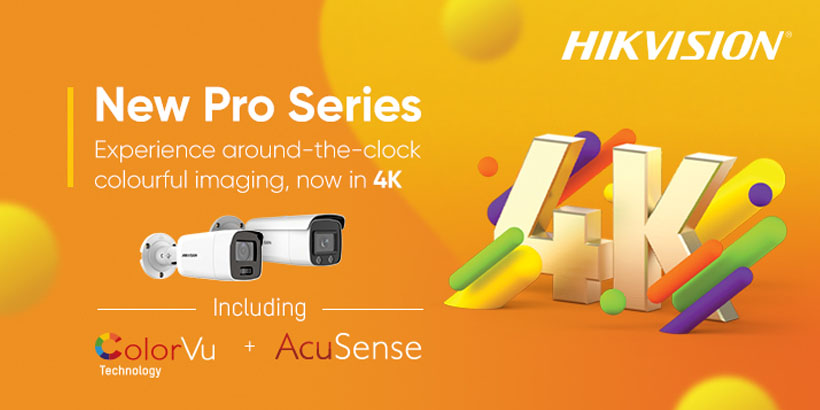
When considering video surveillance, colour information is a powerful tool. For operators and security personnel, colour information is something that can be used as an intuitive part of a search. For example, if a suspect has been seen in an area, and the surveillance system operator is asked to scrub through the footage to find a man of around six feet in height, with dark hair, the search could take some time. However, if it is known the suspect is wearing a red jacket, then the search time will most likely be reduced.
Colour is something that most people recognise and can identify with little or no effort. Its value in quickly and accurately identifying suspect people or vehicles is often critical, and it forms an important part of evidential material. Unfortunately, when using video surveillance, colour fidelity decreases as light levels fall, and in many cases, colour information is discarded once illumination is low.
Many cameras default to monochrome operations as the ambient illumination decreases, and when additional lighting such as infrared lamps is used, images lose all colour detail. While the images might be crisp and clean, the advantage of using colour information is lost. In such circumstances, a red jacket will appear as grey, as will a blue, green, brown or grey jacket!
 Because of the importance of colour information, video surveillance manufacturers have tried various methods to capture colour information in low light scenes. Hikvision’s solution comes in the form of ColorVu technology.
Because of the importance of colour information, video surveillance manufacturers have tried various methods to capture colour information in low light scenes. Hikvision’s solution comes in the form of ColorVu technology.
ColorVu Technology enables the camera to capture video containing colour information in a range of conditions, including in extremely dimly lit environments. This not only gives the operator or security teams more information about a suspect, but it also makes it simpler to identify targets in dark scenes. When using conventional cameras with infrared lighting for night-time monitoring, people, vehicles, and other critical objects can blend into the dark background, making it difficult for operators to quickly assess a situation, or make positive identifications.
Hikvision’s ColorVu technology has the ability to capture colour details in low lighting. This is due to advances in lens technology and the use of high-performance sensors. The cameras also include a supplemental light for extremely dark situations.
The cameras make use of an F1.0 aperture, which the manufacturer states captures four times the light of typical cameras. This enhances colour replication in poor lighting, without the need for excessive exposure times which can result in blur and smear. The advanced image sensor uses self-adaptive 3D digital noise reduction to eliminate noise and ensure full-motion video.
The capture of colour images around the clock has benefits for several applications, including car parks, businesses and residential applications. Car park facilities can be difficult to protect due to low and often uneven lighting, but to differentiate and identify vehicles, colour information is important. Because ColorVu uses supplemental lighting to make parking areas easier to secure, this means there is no need for additional lighting to capture colour images. ColorVu’s environmentally friendly light will not interfere with a driver’s vision, as opposed to harsh and bright lights. This allows detailed imagery, such as the colour of a vehicle, to be recorded for forensic review. Also, unlike where cameras with IR illumination are used, with ColorVu there isn’t reflection off number plates which can make the details hard to read.
In business applications, users can monitor entrances and exits as well as dimly lit interior and exterior areas where theft or other crimes occur, such as dark hallways, external walkways and loading bays.
Residential buildings often have several low-light areas that are potentially risky and difficult to navigate in darkness. ColorVu cameras provide surveillance where incidents or accidents might occur, and the supplemental lighting illuminates these areas to reduce risk and improve safety for tenants and visitors.







